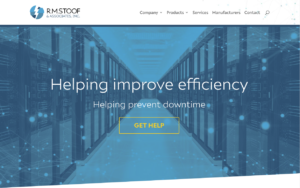Your website is not an ad. But, that’s not to say that your website isn’t a sales tool. What’s the difference? Advertising breeds interest. It brings your prospects in the door, so to speak, so that you can interact with them, learn their needs, and explore in-depth how what you provide meets them. Sounds a lot like a website, doesn’t it? Allow me to elaborate.
Website visitors are already through your doors.
In the early days of the Web, people browsed around aimlessly, looking to see what was available there. (Check out this screenshot of the very first web page ever, in 1991!) Nowadays, visitors know what’s available online: Everything. Their searches are focused, and their time is spent much like it is when they are shopping in traditional brick and mortar stores. In other words, they know what they’re looking for and they are actively seeking it out.
And, because they are doing it all online, they are impatient as all get out.
Websites that spend time upfront trying to sell visitors on their products or services – using colorful or whimsical language, animated or video advertisements, or the dreaded splash page – are wasting time preaching to the choir. Visitors do not arrive on your website to be sold, they arrive to learn more about what you offer to make their final decision and purchase. It’s time to put away the glitz and glitter and use your website to offer up the simple facts.
After all, that’s what your visitors are there for.
Think of your site as a virtual representative, ready to answer your prospects’ questions.
Instead, know the key advantages that your company offers and put this information front and center in simple language. Follow through by including the basic information that forms the backbone of your product or service.
Have a good understanding of the common questions or hurdles your customers need answered before making their decision to purchase. Odds are, the answers to those questions won’t be found in your advertising campaign, which is why they sought you out on your website. Knowing this and addressing those concerns immediately takes the average “brochure website” and turns it into a virtual representative, available all hours of the day for your prospects.
This approach will serve both your customers and you far better than just another channel to play your advertising message on. In conclusion, your website is not an ad because the two serve fundamentally different purposes.
- Ads and websites have big differences
- Ads = captive audience (traditionally)
- Websites = fleeting, distracted audience
- Ads = because audience is captive, can express your points without regard for what the audience actually wants. An ad can create desire where there is none.
- Websites = audience is in active pursuit of something specific. Need to speak to needs they already know they have.
